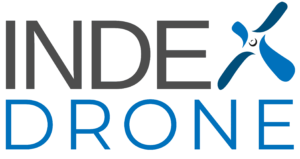Renewable energy in any form is one of the most important needs in today’s world. The world is facing a massive increase in population, thus forcing us to look for an alternate energy source. Solar energy being one of them.
Solar panels are used to generate electricity using sunlight. The huge installation of solar panels has to be maintained frequently, hence drones come into the play.
Some benefits of using drones to perform solar inspection
Time and cost effective way of inspection
Drone inspections are 10 times faster than traditional methods. The traditional solar inspection takes around 2-5 hours per megawatt for a group of technicians to inspect, and at the same time is very costly. On the other hand, drones equipped with infrared cameras have the ability to fly up to 10-50 MW in a single day.
The longer it takes to complete a manual inspection, the less time the PV system is generating revenue, so it’s best to perform inspections as fast as possible. The Drones ability of saving a lot of inspection time and also being cost-effective, makes it an obvious choice for maximising profit. Unlike manual I-V curve inspections, drones can inspect solar panels even while they are operating, leading to no loss of revenue during that time. Drone solar maintenance inspection provides a complete interactive map of the PV system that helps detect individual faults, as well as provide estimates of total loss of revenue if the identified problem goes unfixed.
Aerial topographic survey
Before construction begins on a ground, it’s important to minutely study about the condition of the site. Drones can survey the topography of a site accurately, helping development and engineering teams to figure out important things which have to be done before construction actually starts, such as the need to do any earthwork before building. Drones have the capability of measuring and assessing the ground and producing contour maps, diagrams with exact volume measurements, orthomosaics, digital surface models and more. Aerial topographic surveys help in positioning the solar panels to a place with maximum sunlight and show potential runoff and cut and fill areas. Moreover, topographic drone surveys also give 3D data for future assessments and documentation of the site.
Solar commissioning inspection
Drones also help in commissioning and asset transfers. To verify that the new solar plant is healthy and up to standards before closeout, Drones are used for checking whether the installation is complete, safe and is operating at peak efficiency. Drone commissioning inspections help locate installation issues like string outages, defective modules, inverter and combiner anomalies and more. Monitoring the sites within a year of site commissioning, helps detect the uncovered issues while in the warranty window.
Site shading assessment
Shading assessments produce countless benefits. Drones can assess the impact of shading on a PV system. Using the site’s geographical location, starting from nearby obstructions to seasonal sun positioning, drones can graph potential shading effects over the course of the year. Drone shading assessments include all the imagery from a standard inspection as well as detailed diagrams visualizing shade obstructions. This helps to understand the quantity and location of shading anomalies and to estimate the resulting production loss so that a site remediation can be planned.
Transmission line inspection
Transmission lines are solar utility lines that distribute solar energy from solar plants to outside areas. As solar energy continues to grow, more and more transmission lines will need to be constructed to transport that energy.
Manual transmission line inspections are dangerous because they require workers to work close to high voltage power lines and also they have to be suspended to about 100 feet in the air. With the use of drones, inspectors locate transmission line issues remotely.
A smart way for reliable powerline inspection is using drones with radiometric thermal cameras. With a thermal-enabled aerial platform, drones reduce risk to personnel, significantly lower inspection costs, and complete inspections faster. They are the smartest solution for reliable powerline inspection.
Now that you know what a solar commissioning inspection is, drones can detect a lot of solar hardware defects after installation.
Better documentation
Drones help in keeping a detailed record of a solar plant’s condition and past repairs, helping to track broader trends. The historical data can also be used to understand which solar panels require the most attention. Inspection using drones, prevents future equipment breakdowns. However, keeping track of even little faults is important as they could turn into a large problem over time if not looked into. Lastly, drones past documentation acts as a baseline to go by for future inspections.
Customer satisfaction
PV system owners can rest assured that their solar plant site is operating at its best because they have reliable drone data to back it up. Also, PV system owners don’t have to deal with contractors working on their site all day, Pilots are usually on-site for only a few hours a day.
